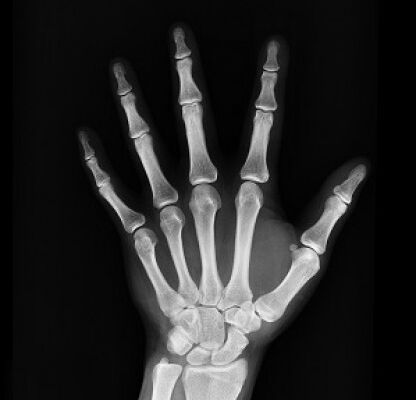Making a professional negligence claim
At some point in our lives, many of us will need professional advice on something, whether it’s advice to buy a property, estate planning, or to manage financial affairs. When we seek out professional advice, we place our trust in an appropriately qualified professional to guide us in taking important decisions. But what happens when the advice is wrong?
When the advice you received was so wrong that a trusted professional failed to follow common professional standards, it can lead to devastating (often financial) consequences for you and the advice may be deemed to be negligent. In such circumstances, you may be entitled to make a professional negligence claim to recover your losses.
What is professional negligence?
A person who requires a formal qualification and often several years of training is called a professional. In the eyes of the law, a professional can be any individual or firm who has expertise in the services they offer and provide, and therefore, there is an expectation that they owe a duty of care to their clients.
A duty of care simply means that the person or firm must fulfil reasonable minimum competency standards in their field of expertise. If they fail to reach the standard, this is known as professional negligence. If you received negligent advice from a professional that has caused you a financial loss, then the law is on your side and you may be able to make a professional negligence claim.
Although it sounds straightforward, professional negligence claims can be complex as it must be shown that the professional’s failure to reach the required minimum standards caused the loss, and it’s not always easy to demonstrate that link.
Which professions can be sued?
A professional negligence claim can be brought against any professional who has failed to act to the required standards. Anyone considering litigation must adhere to the Civil Procedure Rules 1998 (the CPR). In particular, initiating litigation proceedings requires the claimant to adhere to the Pre-Action Protocol for Professional Negligence (the Professional Negligence PAP), which applies to any professional, with the exception of construction professionals and healthcare professionals.
List of professions
- Legal Professionals, such as solicitors, legal executives, trade mark attorneys, barristers, licenced conveyancers, or notaries.
- Finance Sector Professionals, such as accountants, auditors, tax advisors, stockbrokers, insurance brokers, actuaries, financial advisors / IFAs, lenders, or valuers.
What is the time limit for a professional negligence claim?
It’s important to be mindful of the limitation deadline for raising a professional negligence claim. This is the maximum time limit for raising a claim. In the case of professional negligence claims, you have 6 years to begin litigation proceedings from the date of failure to meet the required standards.
In certain circumstances, the time limit is reduced to 3 years from the date that you became aware of the negligence. Typically, the 3 year limit applies to cases where professional litigation resulted in a personal injury.
Examples of professional negligence
Mistakes can happen in all walks of life, and so there are many different examples of professional negligence. Here are some common scenarios.
List of examples
- Accountants: Incorrect accounts prepared, late submission of accounts to Companies House, or incorrect valuation of assets.
- Tax Advisors: providing incorrect advice on tax savings, inadequate advice on tax relief resulting in missing tax relief entitlements, or failure to consider all relevant tax considerations of a transaction.
- Solicitors: providing incorrect advice on a legal matter, breach of confidence, or missing a limitation deadline for starting a personal injury claim.
The steps to making a professional negligence claim
There are 6 key steps to making a professional negligence claim. These are set out in the Professional Negligence PAP and are intended to provide a code of good practice, which parties should follow before starting court proceedings. In short, the key steps are:
- Preliminary Notice
- Letter of Claim
- Letter of Acknowledgment
- Investigations
- Letter of Response and Letter of Settlement
- Alternative Dispute Resolution
Let’s take a look at the key steps in more detail.
Step 1. Preliminary Notice
The first step of professional negligence proceedings is to notify the potential defendant(s) of the claim in writing, as soon as possible after you decide that there is a reasonable chance that you’ll bring a claim. The preliminary notice should include the following information:
- The identity of the claimant and any other parties;
- A brief outline of the grievance;
- A general indication of the financial value of the claim, if possible; and
- Request that the professional informs their professional indemnity insurance.
Upon receipt of the letter, the defendant professional should acknowledge receipt within 21 days.
The preliminary notice is an important part of the proceedings as it gives the professional notice to inform their professional indemnity insurance. If he or she fails to do so, then it may invalidate their insurance policy.
Step 2. Letter of Claim
If you decide that you do have potential grounds for a professional negligence claim, the next step will be for you to send a Letter of Claim to the professional defendant. The Letter of Claim notifies the defendant of your intention to start legal proceedings.
Per the Professional Negligence PAP, the Letter of Claim needs to include the following information:
- The identity of all parties involved in the dispute, or an related dispute;
- The key dates of the facts on which the claim is based, along with copies of all key documents;
- Reasonable requests for documents held by the professional;
- Details of any allegations made by the claimant against the defendant;
- An estimate of the financial loss caused by the alleged negligence, including details of how that sum was arrived at;
- Confirmation of whether an expert has been appointed to provide evidence;
- A request that a copy of the Letter of Claim is sent on to the professional’s indemnity insurers;
- An intimation of whether you agree to adjudication as a means of resolution. If you do, then you can propose three adjudicators or seek a nomination. If you don’t accept referral to adjudication, then you are required to document your reasons.
This is a key document in professional negligence claim proceedings, and if it is not handled properly may negatively impact the outcome of the proceedings. In particular, if the content of the Particulars of Claim is different from the Letter of Claim, then the court may impose sanctions. It’s worth keeping in mind that if you have sent Letters of Claim to any other party in relation to the same dispute or a related dispute, then those letters should also be provided with this Letter of Claim.
Step 3. Letter of Acknowledgment
Similar to the Preliminary Notice, the defendant professional is required to acknowledge receipt of the Letter of Claim within 21 days.
If the defendant professional does not acknowledge receipt within this time period, the court can levy sanctions.
Step 4: Investigations
Once the Letter of Acknowledgement has been issued, the professional is granted 90 days to investigate the claim and respond to the claimant. At this stage, all parties should supply any relevant information or documentation when it is reasonably requested.
In some cases, the professional may engage their solicitors or insurers to carry out the investigation of the claim on their behalf.
Step 5: Letter of response and letter of settlement
Upon completion of the investigation by the defendant professional, typically within 90 days unless an extension has been agreed, the defendant’s legal team will provide a Letter of Response, a Letter of Settlement, or a combination of the two.
Letter of response
The Letter of Response is sent in open communication, which means it can be presented in court. It provides a response to your allegations. The Letter of Response doesn’t have the same formal status of a Defence, but the court still has the discretion to impose sanctions if it is materially different from the Defence in subsequent court proceedings (if any arise).
Per the Professional Negligence PAP, the Letter of Response should include the following information:
- State which parts of the claim from the Letter of Claim are admitted or denied;
- Alternatively, the professional can request additional information if it is unable to admit or deny any aspect of the claim, based on the evidence it currently has;
- Provide specific comments in response to each allegation contained within the Letter of Claim;
- Detail the defendant professional’s version of events, in particular, if the claimant’s version is different;
- Provide a response to the estimated financial loss presented by the claimant; and
- Identify and enclose copies of all key documents to the case.
Letter of Settlement
Per the Professional Negligence PAP, a Letter of Settlement should set out the professional’s settlement proposal or identify any further information that is required before the professional can provide a proposal.
A Letter of Settlement can be issued in a variety of forms:
- An open communication letter;
- A without prejudice letter, which means the contents cannot be admitted as evidence in a court case if the claim does not settle out of court;
- A “without prejudice save as to costs” letter, which means the contents cannot be admitted as evidence in a court case until the main issue is resolved. After this point, the court may then consider the contents to determine the liability of costs; or
- An offer made pursuant to CPR Part 36, which is also known as a “Part 36 offer”.
Step 6: Alternative dispute resolution
It is good practice to offer Alternative Dispute Resolution (ADR) within the Letter of Claim, the Letter of Response or the Letter of Settlement as an alternative to going to court in order to reach a settlement.
The Professional Negligence PAP obligates parties to consider if ADR procedures may be a more suitable course of action than litigation. Ultimately, it aims to encourage parties to settle out of court, where possible, to reduce the costs, stress, and inconvenience of going to court. The court has the discretion to impose sanctions on parties where they have unreasonably refused to engage in ADR.
ADR can take many different forms, depending on the nature of the dispute. Common examples include:
- Mediation: The parties mutually select an independent mediator and venue to assist in the dispute resolution;
- Arbitration: Generally not used in professional negligence cases as much as mediation, unless there is a specific arbitration clause in the professional’s terms and conditions;
- Ombudsman Schemes: The Legal Ombudsman and Financial Ombudsman Service are independent bodies who look into complaints in their respective industries. Both can make binding determinations, if accepted by the claimant;
- Adjudication: Adjudication can be applied to the entire claim or particular issues, and is when an independent third party provides a (usually) binding view. It is not often used in professional negligence cases, unless claims are low value or or relatively straightforward; and
- Early Neutral Evaluation: A third party offers a non-legally binding view on the merits of the claim to both parties. It’s not used often in professional negligence cases, and tends to be offered by defendants facing a weak claim.
The 6 steps of the Professional Negligence PAP are designed to provide a framework to help parties resolve disputes before they get to court.
Contact Waldrons Solicitors
Here at Waldrons, we have a team of experienced solicitors who can help you Contact us today to discuss your circumstances.
More information on professional negligence

